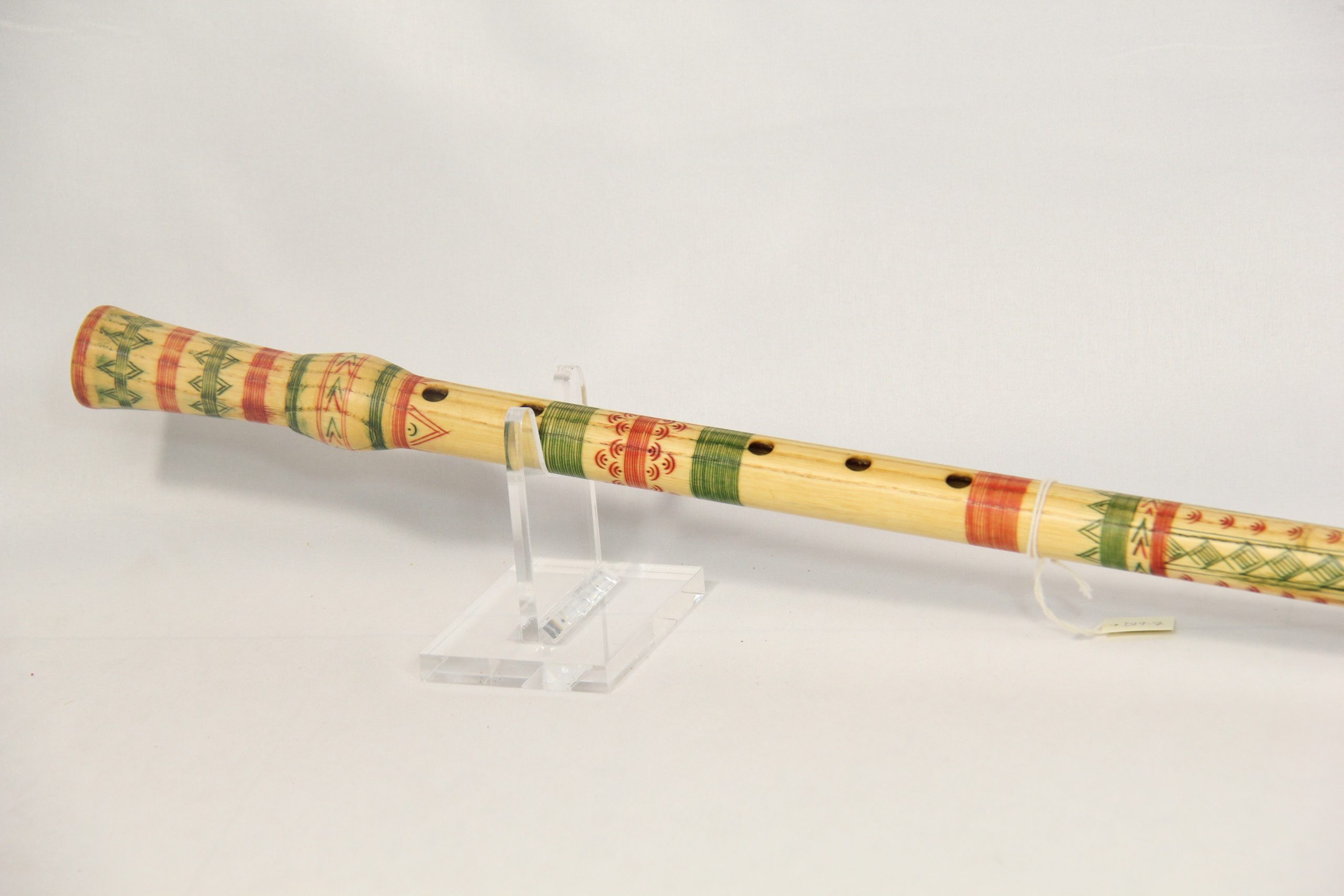Caval
Romanian Flutes in Duke’s Musical Instrument Collection
On August 29, 2007, Romanian-American scholar Iona Sherman delivered DUMIC’s new Romanian instruments made by Ion Costache. The instruments include a double fluier, a large fluier, three small fluiers, a caval, a pai, and an ocarina. Costache is well known for crafting wind instruments mainly used by shepherd’s.
Most of Costache’s instruments are made of ash wood, since this type of wood flourishes in the Southern region. Two of the fluiers in the collection are made of plum wood. The ocarina is made from clay not far from his village. All the instruments were crafted in his home. He has a small storage room outside of the yard where he shapes and bores the instruments. His bedroom makeshifts as a work room in which he shapes the block, fingerholes, decorates, paints, and stores the instruments.
20th century Romanian Flute Maker – IOn Costache
Born on June 15, 1933, Ion Costache became interested in music at the age of ten when he heard many of the other boys in his village playing fluiers and ocarinas. Costache wanted to play the fluier, but he was very poor and could not afford an instrument. He realized that the only way to acquire an instrument would be by learning to make it himself. Although Costache never had the opportunity to go to school, he became an apprentice to a village artisan and learned to make fluiers, cavals, and ocarinas. By the time Costache was sixteen he had mastered the art of constructing these instruments and began making a name for himself as a vendor at the weekly village fair.
With the rise of Communism and the formation of formal ensembles in the late 1960s, Costache’s instruments grew in demand. He was hired to supply instruments for school children and ensembles that were practicing at the local cultural center and competing nationally. In 1999 lon Costache was invited to participate in the Smithsonian Folk Festival in Washington D.C. to sell and demonstrate his instruments. Costache considers this event the highlight of his career. Today Costache continues to work from his home in Merisani and holds contracts with the Museum of the Romanian Peasant and the Village Museum in Bucharest.
Caval- The Romanian 5 Hole Pipe
The caval, in Romanian, refers to a long flute with five finger holes (grouped in two and three), with a block mouthpiece.
It gives a soft and sad tone playing a distinctive scale with the first overblow producing E, and the second A:

It is found in Oltenia, Muntenia and south Moldavia. An old style of playing where the player growls whilst playing continues in remote areas and amongst the Hungarian Csango minorities in Moldavia.
The term caval is also used for end blown chromatic pipes similar to the Balkan varieties. This “Dobrogean” caval is completely open at each end, made in three wooden parts, with eight finger holes in the middle section and four breathing holes in the lower section, very similar to the typical Bulgarian kaval or Turkish Nay, can be found in only Dobrogea and southern Muntenia. (“Caval – the Romanian 5 Hole Pipe | the Eliznik Pages” 2018)

Sources
- Duke University Musical Instrument Collection Files, Ion Costache.
“Caval – the Romanian 5 Hole Pipe | the Eliznik Pages.” 2018. Eliznik.org.uk. 2018. https://eliznik.org.uk/traditions-in-romania/traditional-music/pipes/caval-the-romanian-5-hole-pipe/.






